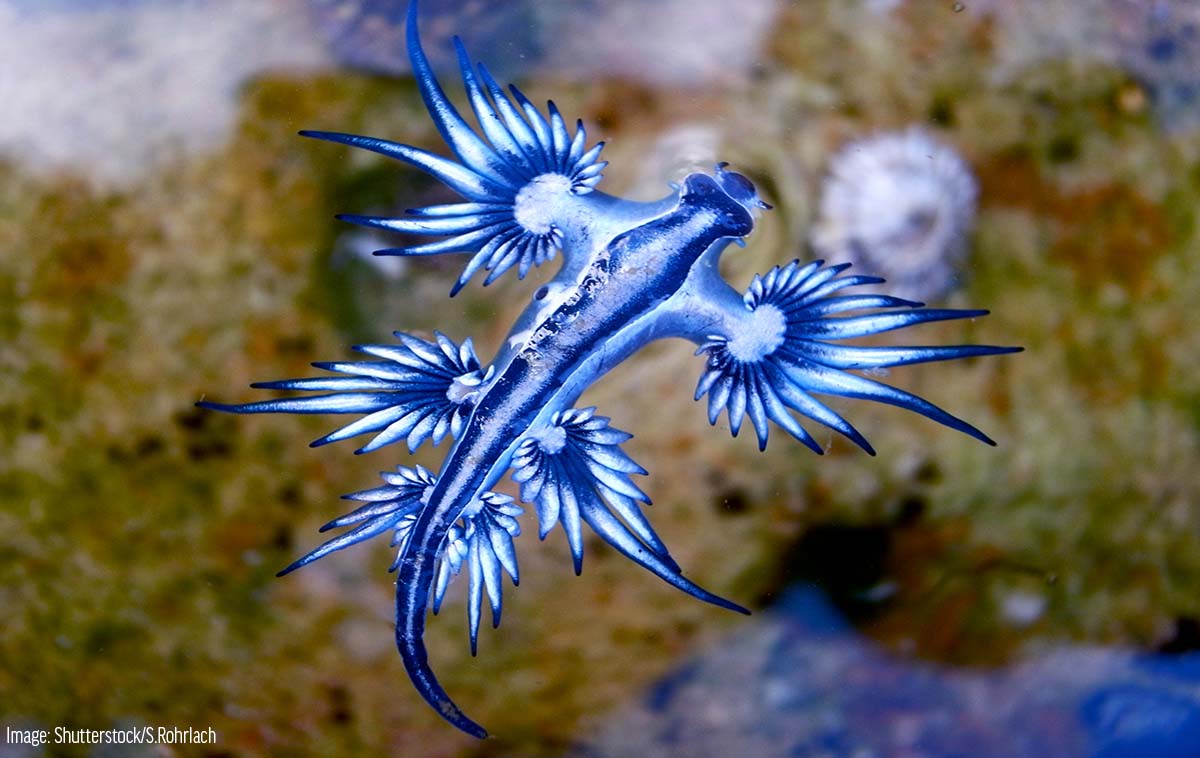Glaucus Atlanticus, also known as the blue sea dragon.
Glaucus atlanticus, commonly known as the blue sea dragon, sea swallow, blue angel, or blue dragon, is a species of small, blue sea slug, a pelagic aeolid nudibranch, and a shell-less gastropod mollusk in the family Glaucidae. It has a maximum size of 35 mm. The ventral surface is midnight blue, while the dorsal surface is silvery blue, with a pale central stripe sometimes present. Its cerata extend laterally from three distinct pairs of lobes, arranged in a single, flat row along the edge of each lobe.
Glaucus atlanticus is rarely seen, except during periods of on-shore winds that bring them and their prey into coastal waters.
Like many other aeolids, Glaucus atlanticus stores nematocysts from its prey in the tips of its cerata for protection against predators. Unlike most aeolids, the sting can be felt by humans. The dark ventral coloration may help conceal them from birds, while the light dorsal coloration may help conceal them from fish. However, some pelagic fish do feed on them.
Their egg mass is a straight thread of white eggs up to 17.5 mm long that floats freely in the water. Freshly collected individuals produce 4-6 egg strings per hour, with 36-96 eggs per string, and a total of 3300-8900 eggs per day.
Glaucus atlanticus is found in the tropical and subtropical waters of the Pacific Ocean, specifically in Hawaii, and is considered cosmopolitan.
The genus name “Glaucus” means “bluish gray,” and the species name “atlanticus” refers to the ocean from which it was first named. It is also referred to as the “man-of-war nudibranch” in some sources.
